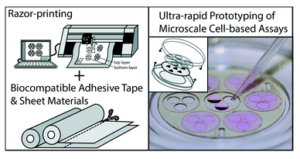Lab on a Chip is introducing recommended authorship contributions in all its published articles from February 2018.
Including a description of author contributions increases transparency of who contributed what to the article and ensures that each author is given the appropriate level of credit (and responsibility) for their contribution. Inclusion of author contributions is already common practice in many biomedical/life sciences journals.
Authors are strongly encouraged to include with their submitted manuscript a section called “Author Contributions”, which will be published with the final article. Contributions should be explained concisely. Authors are strongly encouraged to use the CRediT taxonomy to describe those contributions (see terms below). Authors should have agreed to their individual contributions ahead of submission and should accurately reflect contributions to the work. Please note that for any manuscript with more than 10 co-authors, the corresponding author must provide the editor with a statement to specify the contribution of each author.
CRediT (Contributor Role Taxonomy) is a taxonomy tool by CASRAI (Consortia Advancing Standards in Research Administration) and it was developed to increase transparency in contributions by researchers to scholarly publications. More information about CRediT can we found on the CASRAI website.
CRediT terms
| Contributor Role | Role Definition |
| Conceptualization | Ideas; formulation or evolution of overarching research goals and aims. |
| Methodology | Development or design of methodology; creation of models. |
| Software | Programming, software development; designing computer programs; implementation of the computer code and supporting algorithms; testing of existing code components. |
| Validation | Verification, whether as a part of the activity or separate, of the overall replication/reproducibility of results/experiments and other research outputs. |
| Formal Analysis | Application of statistical, mathematical, computational, or other formal techniques to analyze or synthesize study data. |
| Investigation | Conducting a research and investigation process, specifically performing the experiments, or data/evidence collection. |
| Resources | Provision of study materials, reagents, materials, patients, laboratory samples, animals, instrumentation, computing resources, or other analysis tools. |
| Data Curation | Management activities to annotate (produce metadata), scrub data and maintain research data (including software code, where it is necessary for interpreting the data itself) for initial use and later reuse. |
| Writing – Original Draft Preparation | Creation and/or presentation of the published work, specifically writing the initial draft (including substantive translation). |
| Writing – Review & Editing | Preparation, creation and/or presentation of the published work by those from the original research group, specifically critical review, commentary or revision – including pre- or post-publication stages. |
| Visualization | Preparation, creation and/or presentation of the published work, specifically visualization/data presentation. |
| Supervision | Oversight and leadership responsibility for the research activity planning and execution, including mentorship external to the core team. |
| Project Administration | Management and coordination responsibility for the research activity planning and execution. |
| Funding Acquisition | Acquisition of the financial support for the project leading to this publication. |
Any questions regarding “Author Contributions” should be directed to the Lab on a Chip Editorial Office.













